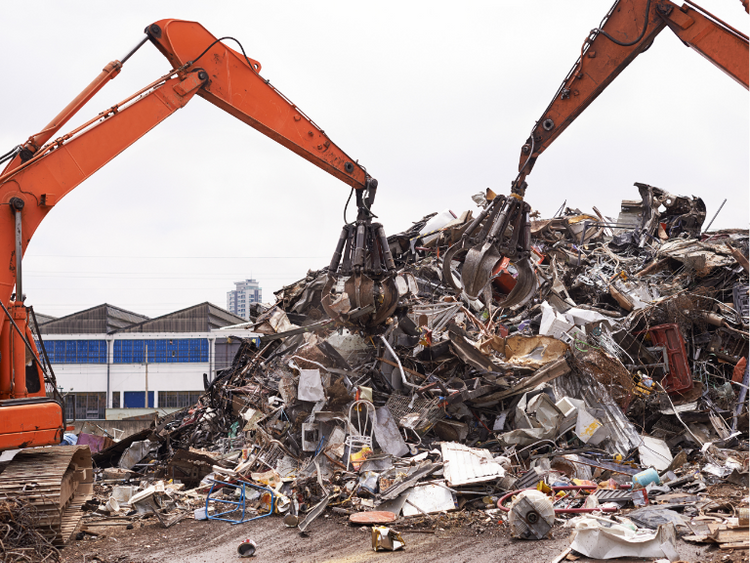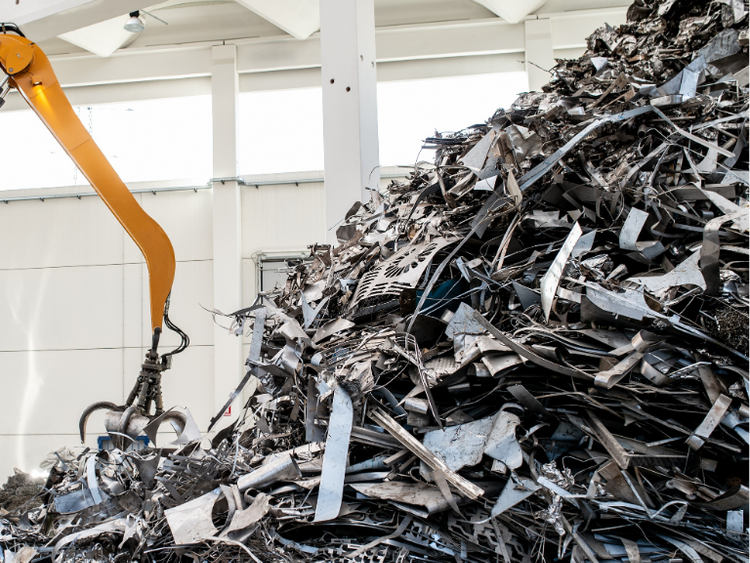Ferrous Scrap

Miller on scrap: Has domestic scrap pricing decoupled from export pricing ?
Written by Stephen Miller
January 17, 2025
The US and Canada have a long history of exporting ferrous scrap to numerous other countries over the last 100 years. During this period, the countries supplied have varied. In the last century, the main export destinations were Japan, South Korea, and the Far East in general. As the installation of EAF melting proliferated, the destinations added were in Turkey and the Mediterranean, in addition to Mexico. It has been debated whether this export activity affects domestic scrap pricing to an appreciable extent.
East vs. West
The domestic scrap demand is quite different depending upon which coast you examine. There is little debate the West Coast is significantly dependent upon exports to the Far East. This is compared to the eastern regions of the US, where most steelmaking assets are located. So, no, the West Coast scrap prices have not decoupled from export pricing levels given meager domestic demand, as opposed to the tremendous amount of export demand. But what about the Eastern US?
In the past, the East Coast also supplied the Far East but now concentrates on Turkey, Mexico, and India for bulk shipments. But the vast majority of the ferrous scrap generated in the Eastern US and Canada is supplied to domestic steelmakers. Export tonnages have varied over the five years between 2019 and 2023, averaging 18.2 million tons per year, according to US Geological Survey statistics. This is in a scrap consumption market in the US of approximately 60 million tons, using the same source.
Export activity influencing US scrap tags?
So, does this level of export activity and the prices paid actually affect US domestic scrap pricing? It is argued it does, especially in times of high domestic demand. Others argue, in times of weak demand, exports give scrap processors another outlet for their generation and does not affect the prices that mills pay.
The US scrap market turns over every month due to the issuance of 30-day contracts handed out by steelmakers to dealers and brokers. In contrast, the export markets trade every day. This difference, some claim, lets buyers and sellers use export price fluctuations during the 30-day period to their own advantage in trying to influence the domestic price for scrap in the coming month.
This has led some players to theorize that export prices are mainly psychological and don’t really affect things “on the ground” that much. In this scenario, news about export activity is manipulated by buyers and sellers to influence the monthly direction of the scrap market.
The question has been posed, “Has domestic scrap pricing decoupled from export pricing?” A case can be made that it has using the manipulation argument.
However, the main argument for decoupling centers around the type of scrap exported. The hybrid grade of mixed #1 HMS and #2 HMS called 80/20 is the main exported scrap grade. Shredded scrap is the second most popular, distantly followed by plate and structural. Most North American steel mills will not accept the export grade of HMS 80/20 due to its low Fe yield and its residual alloy content. So once this grade is accumulated at East Coast scrap export terminals, it has to be exported with all its imperfections.
On the other hand, shredded scrap is more of a fungible grade and can be used domestically. Normally, shredded scrap produced at export facilities does get shipped abroad. However, on occasion it can be redirected into the domestic market. This would depend upon existing logistics, especially railcar availability. This is the main argument against export/domestic price decoupling. SMU has learned from sources in the trade, shredded scrap has been directed from US East Coast exporters to markets in the Central and Midwest districts.
This makes sense since export prices have fallen significantly in January. This dislocation allowed steelmakers to limit pricing in January to a $20-per-gross-ton increase over December, as most of them had larger buying programs. Will the exporters sell domestically in February? SMU will let you know.
Conclusion
There is no definitive answer to the actual effect of export pricing on domestic price levels. It can have an effect at times on certain grades and can benefit both buyers and sellers. One thing is for sure, though. It is a great advantage for North America to have this valuable resource of plentiful ferrous scrap metal.

Stephen Miller
Read more from Stephen MillerLatest in Ferrous Scrap

Possible sideways move for ferrous scrap prices in November?
The domestic scrap market will start to form as early as next week for November shipment, sources told SMU. Predictions as of now are neither very positive for an increase nor are they negative for a decrease.

Cliffs offloading some FPT assets, considering HBI plant sale as well
Lourenco Goncalves confirmed that Cleveland-Cliffs is actively selling off portions of its Ferrous Processing and Trading (FPT) assets. Its direct reduction plant in Toledo, Ohio, may also be up for grabs...

Ferrous scrap export market activity sizzles
There has been renewed activity in the scrap export market in the Mediterranean Basin during the last week. Most of the activity occurred in Northern Europe and the Baltic regions with prices basically staying sideways to up slightly.

Miller on Scrap: Analyzing the November market from different angles
Since the October prices came out there have been a variety of speculative opinions on what the November looks like from several sources SMU regularly contacts.

Busheling and shredded tags drop, widening HRC vs. prime scrap spread
US scrap prices fell on busheling and shredded in October, while HMS remained flat, market sources told SMU.
